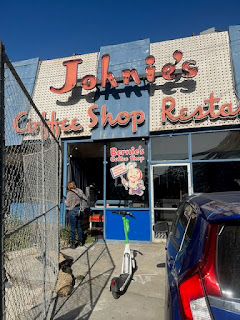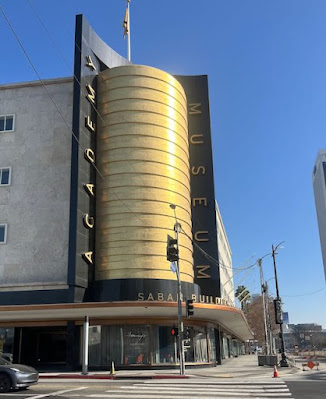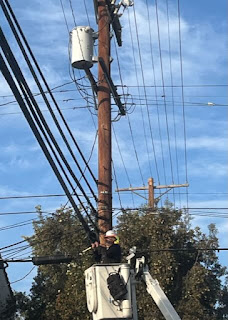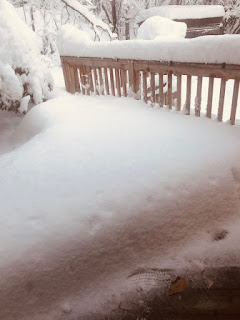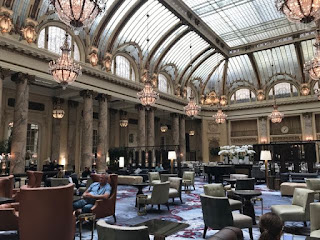Blog post are backed up waiting to get through the Panama Canal equivalent of from my brain to my fingertips. Floating out there are posts on the Unhoused (not a local issue), Nature as a science based replacement for more supernatural gods, and some words about the Fifth Circuit. All those posts are fairly heavy and need me to think and edit and research more and so they just float there waiting their turn. Unlike the Panama Canal delay, this one is not water related. The worker is just distracted.
This week, for instance, my Peace Corps training roommate from 1966 in DeKalb, Illinois and his wife visitor and we're kept them busy understanding why we still live in Anchorage. But it's not like we haven't seen each other since 1966. We've been in each others lives as much as people separated by a six hour plane ride can be. But it's been a while since they've been in Anchorage. Their kids were just a bit older than their grandkids are now when they were last here.

Besides taking advantage of the sunshine on various outdoor adventures their urban bodies could handle, we went to see
Hamilton Tuesday night and Thursday night we saw
The Mystery of Irma Vep at Cyrano's. [I'd note this post got partly written and when I tried to upload these pictures, the Air Drop didn't work again - after being fine for several weeks. This time rebooting the computer fixed things.]

Hamilton was the first time we've been to a big entertainment event since COVID restrictions. We've been to a few movies, but at times when we were the only ones, or almost the only ones, in the theater. We were all masked Tuesday as were some of the ushers and a small number of other patrons. But we learned a family member (out of town) just had COVID and a 50th wedding event in Anchorage was cancelled because two people had COVID. While I realize that for fully vaccinated people it's not likely to be fatal, a mask is still much less disruptive than being sick for a week.
I'd found the soundtrack of Hamilton at the Internet Archive and listened casually for the previous week on the assumption that musicals are more enjoyable if you know the music. And that rap is easier to understand if you hear it more than once and can read the lyrics.
The ADN had a letter this week noting that a number of Hamilton viewers said they sat next to someone who had memorized the Hamilton sound track and sang along with each song. One member of our group at one end sat next to such a person. As the ADN letter writer wrote, "We didn't pay to listen to you." Maybe they should have a sound proof section for those who want a sing-along experience. You know, like the churches that have glassed off space for people with crying babies.
But we did have a good time and enjoyed the spectacle. While there were four empty seats near us, the place was packed on a Tuesday night. (And I suspect the four empty seats were sold, but the people weren't able to attend.)
The Atwood holds 2056 people. Our seats were not the most expensive at a bit over $100 each. So, just to make the math easier, let's assume an average of
$100 per ticket X 2000 seats X 17 performances = $3,400,000.
So, 34,000 people will have spent $3.4 million for a couple of hours of entertainment in Anchorage. Most of that money, I assume, will go to the actors, stage people, and the touring company, and various ticket sales agencies. Not much of it will stay in Anchorage. Some of the people attending will go more than once. And some will be tourists, like our friends who were here from Chicago.
The other theater event we went to this week was
The Mystery of Irma Vep at the relatively tiny Cyrano's. But this is very local theater with local actors and production. And the price was less than one-third of Hamilton.
This was a bit disorienting because Cyrano's has moved from its long time downtown location to the old Out North location which also presented performing artists almost always with an LGBTQ link. I still think I'm at Out North, even though all the plays listed on the wall are Cyrano productions that were presented at the downtown location. It was sort of like being at a friend's house, except they've moved and another friend has moved in with all their furniture.
The play was a little silly - a British murder mystery romp with two actors playing six, maybe seven parts, including a werewolf and a mummy. The Dramaturg's* note in the program said, among other things:
"The script of The Mystery of Irma Web - A Penny Dreadful requires that both actors who are cast be the same sex and is a licensure requirement. Insead of two men, Director Krista M. Schwarting believed that two women could successfully accomplish the same goal."
She also mentioned that the play involves those two actors to make 35 costume changes.
The opening scene takes place in an English manor. For the second scene, the stage was transformed with folding doors into an Egyptian tomb.
While the play itself didn't hold much deep meaning for me, the two actors were excellent, deftly staying in accented character through all those costume changes.
*I didn't really know what a dramaturg was either. The program says she was professionally trained in Dramaturgy. Merriam Webster online says a Dramaturg is a specialist in Dramaturgy. And that Dramaturgy is:
"the art or technique of dramatic composition and theatrical representation"
That's not terribly helpful. So I went to
Wikipedia:"A dramaturge or dramaturg (from Ancient Greek δραματουργός dramatourgós) is a literary adviser or editor in a theatre, opera, or film company who researches, selects, adapts, edits, and interprets scripts, libretti, texts, and printed programmes (or helps others with these tasks), consults authors, and does public relations work.[1][2][3] Its modern-day function was originated by the innovations of Gotthold Ephraim Lessing, an 18th-century German playwright, philosopher, and theatre theorist.[4]"
OK, so that's one post through the canal.
 We went to the LA County Museum of Art on Thursday. And passed this bit of graffiti on the way. We also passed an Indian grocery store.
We went to the LA County Museum of Art on Thursday. And passed this bit of graffiti on the way. We also passed an Indian grocery store. 



